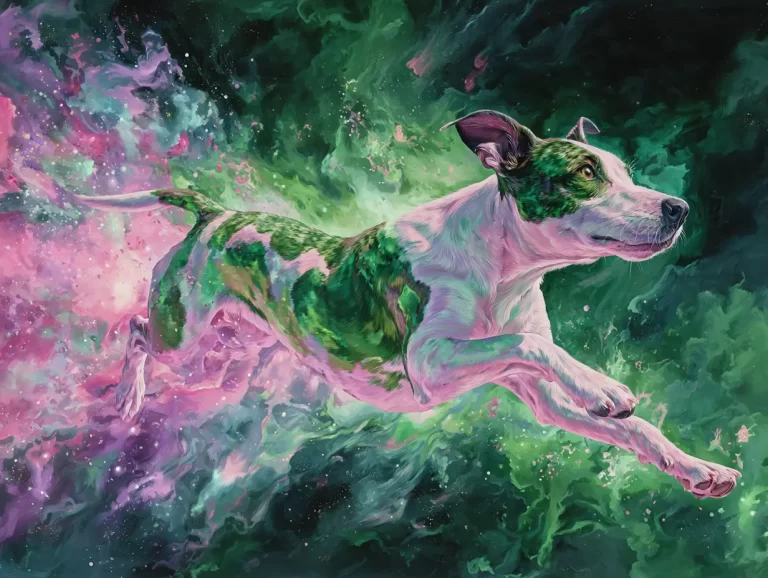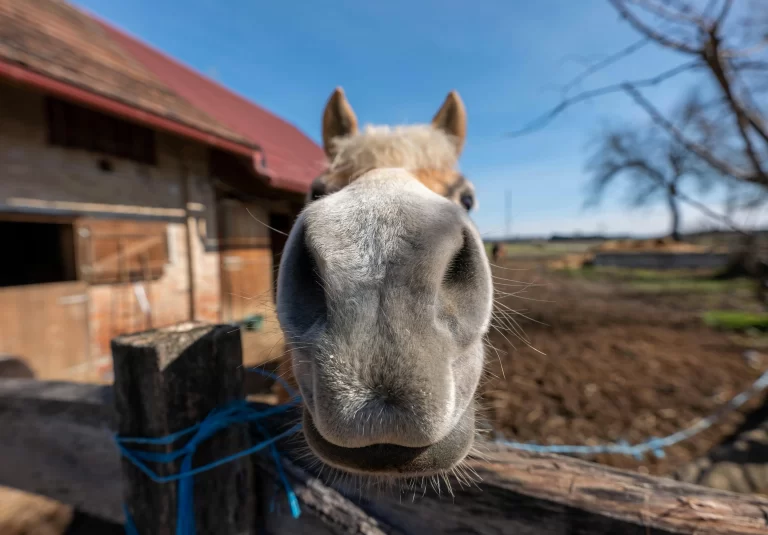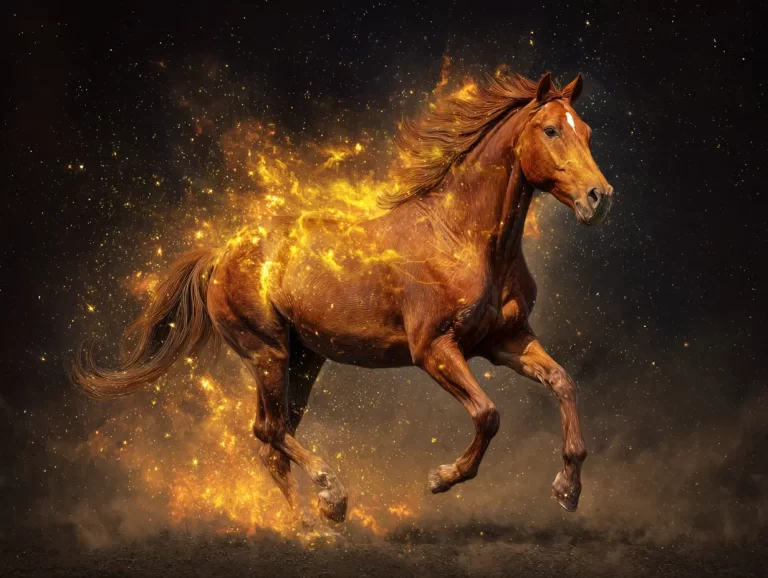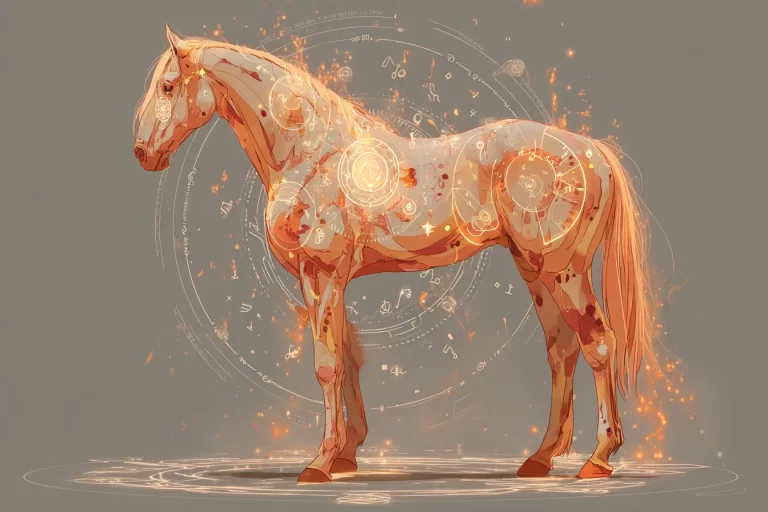Balancing Your Pet’s Chakra Energy: A Complete Guide to Holistic Energy Flow Through The 8 Chakras
Whether you’re supporting a rescue animal’s emotional healing, helping an older companion feel more grounded, or simply deepening your connection with your pet, chakra work offers a gentle, intuitive way to support whole-being wellness.
This guide brings together everything you need to know to balance your pet’s chakra energy: how each energy center works, how to recognize imbalance, and how to offer a full-body chakra balancing session. You’ll also find links to detailed blog posts on each chakra and a free downloadable guide to help you get started.

Table of Contents
What Are Chakras and Why Do They Matter for Animals?
Chakras are spinning energy centers located along the body that help regulate physical, emotional, and spiritual wellbeing. Animals, like humans, have chakras that influence how they feel, express themselves, move through the world, and interact with others.
When your pet’s chakras are balanced, you may notice more calmness, confidence, ease, and connection. When a chakra is blocked or overactive, you might see behavioral issues, reactivity, lack of focus, or physical discomfort.
Chakra work allows us to tune in to the energetic layer of healing, a space where animals thrive naturally. They don’t need to understand the words or methods; they feel the intention, presence, and love.
Want a printable version of this chakra system?
Download your free guide: Balance Your Pet’s Chakras: A Holistic Guide for Connection, Calm, and Confidence

Bring more connection, calm, and confidence into your animal’s life with this printable guide. Inside, you’ll find easy-to-follow steps for supporting all 8 chakras — including affirmations and practical tips for healing through touch, energy, and intention.
How Chakras Work Together in the Animal Body
Although we often talk about chakras individually, they function as part of a unified system. Each one influences the others, creating a full-body energetic rhythm.
For example, if your dog’s throat chakra is overactive, barking constantly or acting out, the deeper issue could be a lack of grounding in the root chakra or emotional overwhelm in the sacral chakra. Horses with a blocked crown chakra may seem disconnected, but often they’re also holding tension in the solar plexus or heart.
Because the chakras are linked energetically, imbalance in one often creates a ripple effect throughout the system. For example, a horse with an overactive sacral chakra might display heightened emotional reactivity, but if the root chakra is weak, they may also struggle to feel safe enough to self-regulate.
Similarly, a cat with a blocked heart chakra may resist physical affection, which in turn can disrupt their ability to communicate clearly through the throat chakra. The chakras don’t operate in isolation; they constantly respond to one another, adapting to how the animal processes emotion, sensation, and external experiences.
This is why whole-system healing is so powerful. Working with all eight chakras allows you to balance your pet’s chakra energy not just where symptoms show up, but where deeper patterns begin.
You’re not just soothing the surface; you’re creating a stable, flowing foundation of energy that helps your pet feel safe, expressive, connected, and aligned. Even if your animal only shows signs of imbalance in one area, offering gentle attention to the full system brings harmony in a way that single-point focus often can’t.

A Deeper Look at Each Chakra
Below you’ll find a summary of each chakra’s location, key themes, and how it may show up in your pet’s behavior. You can explore each one in more detail by clicking through to the individual blog posts.
Root Chakra (Red)
Location: Base of the spine or tail
Themes: Grounding, safety, stability
The root chakra is your pet’s energetic foundation. When balanced, it helps them feel safe in their body, connected to their environment, and able to settle into routines with ease. It supports their sense of physical security and belonging in the world.
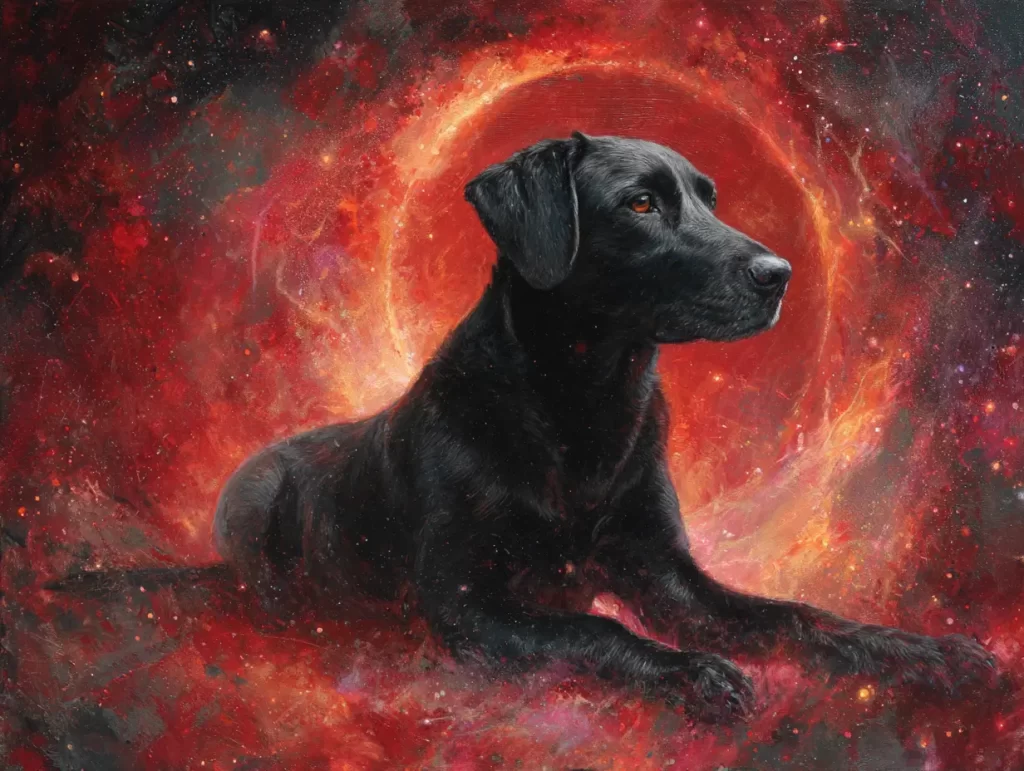
Sacral Chakra (Orange)
If the root chakra is imbalanced, your animal may seem skittish, anxious, overly alert, or quick to bolt or hide. You might also notice difficulty with transitions or aversion to touch near the hindquarters. Grounding practices like earth connection, calm repetition, and steady presence are key to bringing this chakra back into balance.
Location: Lower belly and hips
Themes: Emotions, creativity, playfulness, adaptability
The sacral chakra governs emotional flow and joyful movement. It supports your pet’s ability to express feelings, play freely, and respond to the world with openness. When balanced, it helps animals feel emotionally safe and physically fluid.
An unbalanced sacral chakra may lead to behavior that swings between shut-down and hyperactive. Your pet may resist touch around the belly or hips, or seem emotionally overwhelmed by change. Restoring flow often involves gentle massage, play-based bonding, and activities that spark creativity and comfort.

Solar Plexus Chakra (Yellow)
Location: Upper abdomen and ribs
Themes: Confidence, willpower, independence, healthy boundaries
The solar plexus chakra is where your pet holds their sense of personal power. It helps them feel confident, capable, and able to express their own choices. A healthy solar plexus supports clear communication, balanced independence, and a willingness to try new things.
Imbalances here may show up as disempowerment, fear of making mistakes, defiance, or a need for control. Some animals may become overly submissive or shut down, while others overcompensate with reactivity or boundary-pushing. This chakra responds beautifully to calm structure, gentle encouragement, and moments that allow your pet to succeed on their own terms.

Heart Chakra (Green)
Location: Center of the chest
Themes: Love, compassion, trust, connection
The heart chakra is the energetic home of love and emotional bonding. When this chakra is balanced, your pet feels open to both giving and receiving love. They can build deep connections, forgive easily, and stay present during moments of vulnerability.
An imbalanced heart chakra can create behavior that seems guarded, clingy, withdrawn, or reactive to affection. It may also show up as grief, separation anxiety, or fear of abandonment. Healing the heart chakra is often about building trust through consistency, kindness, and shared emotional experiences.
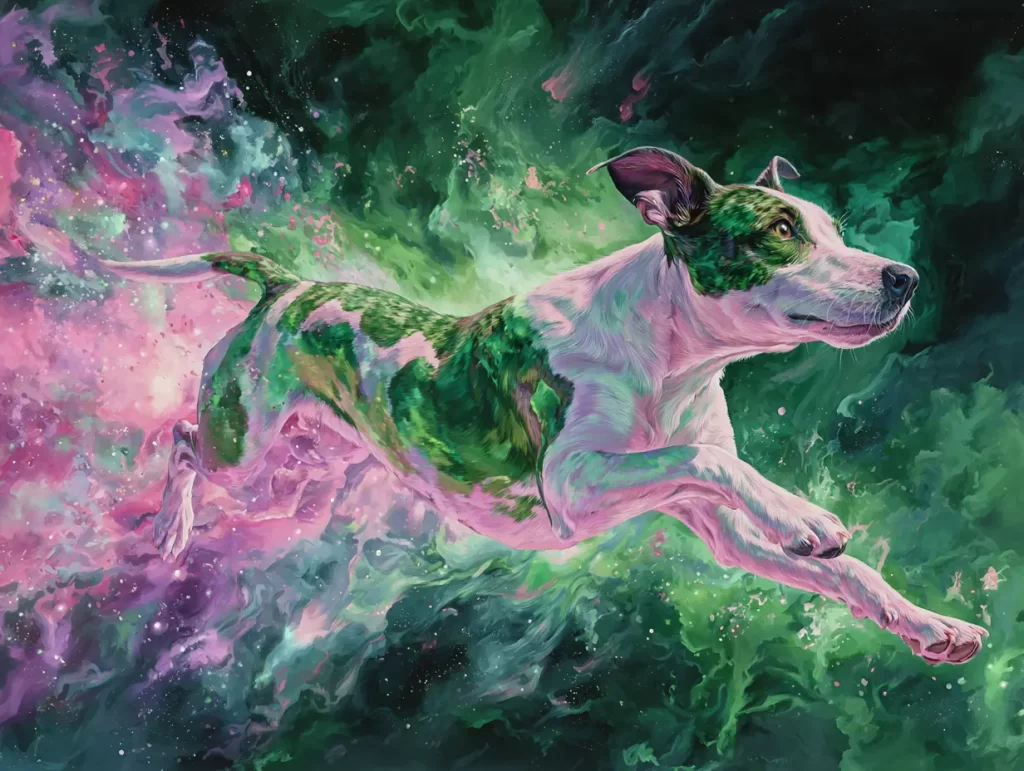
Throat Chakra (Blue)
Location: Throat, jaw, and neck
Themes: Communication, expression, energetic truth
The throat chakra governs how your pet expresses themselves and how well they feel understood. Communication includes vocal sounds, body language, eye contact, and energetic cues. When this chakra is balanced, your animal can “speak” clearly and feel heard.
You might see an imbalance through excessive barking or vocalization, sudden silence, resistance to training cues, or tension around the neck or jaw. Healing this chakra involves slowing down, listening more deeply, using your voice with presence, and supporting expression through calming sound or touch.

Third Eye Chakra (Indigo)
Location: Between the eyes, at the forehead
Themes: Intuition, inner knowing, perception
The third eye chakra supports your pet’s ability to sense and interpret energy. Animals with a balanced third eye are focused, calm, and responsive to subtle cues. They trust their instincts and often anticipate needs or changes without being told.
When this chakra is off-balance, your pet may seem distracted, easily overstimulated, confused, or spaced out. They might also have difficulty adjusting to change or interpreting new environments. Supporting the third eye involves stillness, intuitive bonding, and visual or energetic clarity.

Crown Chakra (Violet or White)
Location: Top of the head
Themes: Spiritual connection, peace, trust, surrender
The crown chakra connects your pet to a sense of peace that transcends their day-to-day experiences. It holds their connection to the universe, to spirit, and to the rhythms of life. A balanced crown chakra brings calm, presence, and a quiet kind of wisdom.
When imbalanced, animals may seem emotionally flat, depressed, disoriented, or overly dependent on their guardian for regulation. Others may resist energetic work or seem shut off from connection. Supporting the crown chakra is less about doing and more about being — inviting in silence, sacred stillness, and a sense of unconditional love.
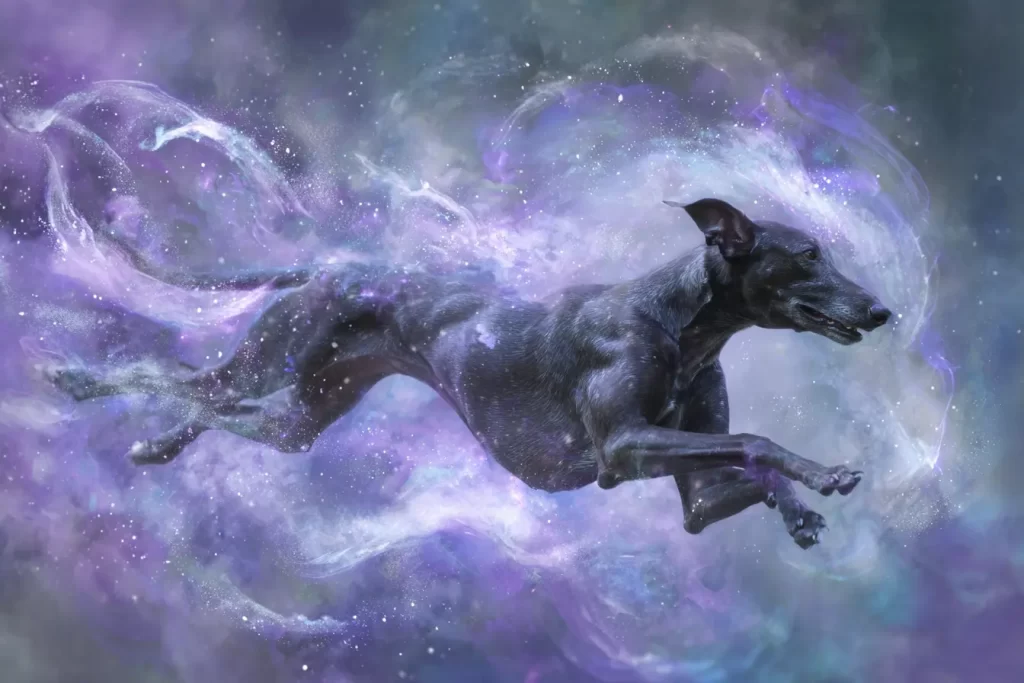
Brachial Chakra (Black or Charcoal)
Location: Shoulders or base of neck (between the front legs)
Themes: Trust, bonding, energetic gateway
The brachial chakra is a unique energy center found only in animals. Often referred to as the “gateway chakra,” it governs the connection between your pet and the outside world, especially their bond with you.
When this chakra is balanced, your animal is open to trust, able to settle into their body, and more receptive to energy work, training, and affection.
An imbalanced brachial chakra may show up as tension near the shoulders, sensitivity to touch or tack, guarded behavior, or difficulty forming new relationships. Because it serves as a central access point to the rest of the chakra system, supporting the brachial chakra first can make all other healing efforts more effective.

How to Balance All 8 Chakras in One Session
Supporting the full chakra system creates deep, sustainable shifts in energy and behavior. Rather than addressing symptoms in isolation, you’re working with the root of imbalance and inviting the body, mind, and spirit into harmony.
Offering a full-body chakra session to balance your pet’s chakra energy is a beautiful way to support your pet’s entire energy system. It can be especially helpful during times of transition, after stressful events, or simply as a grounding routine.
Preparing for a Chakra Session
Begin by choosing a quiet time and place where your pet feels safe and comfortable. You might work in a shaded pasture, a cozy room, or their favorite resting spot. Dim lighting and soft music can help create a peaceful environment.
Before you begin, take a few slow breaths to ground yourself. Let go of distractions, expectations, or the need to “fix” anything. The goal here is presence and connection. If you’re carrying stress, your pet will feel it. If you’re calm and open, they will relax and receive.
You might set an intention such as, “I’m here to support your balance and peace,” or, “Let’s connect with ease and love.” Let your animal move freely and participate in whatever way feels natural for them: lying down, standing, yawning, watching, or sleeping are all valid responses.
You can perform the chakra session with gentle hands-on touch, visualization, spoken affirmations, or a mix of these techniques. Trust what feels natural to you and to them.

Step-by-Step Chakra Flow With Affirmations
1. Brachial Chakra (Charcoal or Deep Violet)
You can begin here, or end here, depending on the animal’s response. Place your hands on or near the shoulder area, just above the front legs or near the base of the neck. This is where the brachial chakra sits, the energetic bridge between you and your animal. Rest both hands gently here or hover with calm, open presence. Visualize a charcoal-gray or deep violet light expanding from this space, anchoring your connection and inviting trust to flow through the body. Let your breath be steady and unhurried as you hold this energetic doorway open.
Affirmation: “You are safe with me. We are connected in trust, and I honor your pace.”
2. Root Chakra (Red)
Place your hands on or near the base of the tail where it meets the body. Visualize deep red light moving downward through all 4 feet, connecting them to the earth. Imagine their energy grounding like strong roots growing into the soil.
Affirmation: “You are safe, stable, and grounded in your body and the earth.”
3. Sacral Chakra (Orange)
Move your hands to their upper hips. Massage and gently or hover your hands while breathing slowly. Visualize warm, orange light radiating outward. Invite a sense of movement, play, and emotional flow.
Affirmation: “You are free to feel, move, and express your joy.”
4. Solar Plexus Chakra (Yellow)
Place a hand over their stomach or ribcage, or behind their withers on their back. Picture a soft yellow glow growing brighter with each breath. This is their center of personal power. Imagine confidence rising from within.
Affirmation: “You are strong, capable, and confident in your being.”
5. Heart Chakra (Green)
Gently rest your hand over their chest, near a shoulder, or simply breathe in sync with them. Imagine a glowing green light expanding with love. It might have pink at the edges. Let your own heart soften as you connect.
Affirmation: “You are deeply loved, and your heart is open to give and receive.”
6. Throat Chakra (Blue)
Lightly touch or hover near the throat and neck. Speak softly, hum, or sing a gentle tone. Imagine a pale blue light moving through this space, clearing the way for honest, safe communication.
Affirmation: “Your voice matters. You are heard and understood.”
7. Third Eye Chakra (Indigo)
Move to the forehead area, just between the eyes. If they’re comfortable, make small circular motions with your fingers, or simply hover. Visualize indigo and purple light, calm awareness, and centered perception.
Affirmation: “You trust your intuition and perceive clearly. You make good decisions.”
8. Crown Chakra (Violet or White)
Finally, hover your hand just above the top of their head or gently touch the crown if allowed. Visualize white or violet light pouring down and surrounding their entire energy field, entering the ground. Invite peaceful connection to source, spirit, or the greater whole.
Affirmation: “You are connected, supported, and surrounded by peace.”

Signs That Your Pet Is Receiving Energy
Animals show energetic shifts in many ways, some subtle and some more noticeable. Here are common signs that your pet is receiving and integrating chakra work:
- Deep sighs or yawns
- Sudden stillness or laying down
- Blinking slowly or closing their eyes
- Leaning into your hand or body
- Licking, chewing, or shaking off
- Changes in breathing
- Quiet attentiveness or a sleepy state
Some animals may respond strongly at one chakra but show no reaction at another; this is completely normal. Trust the process and avoid forcing them to stay still. Movement is part of energy flow, too.
If they move away, let them. Try sending the touch energetically from further away, and watch their reactions. There’s more than one way to balance your pet’s chakra energy!
Final Tips for Ongoing Chakra Support
Chakra healing doesn’t have to be a special event. It can become a loving part of your daily or weekly routine. You might offer a mini-session before a vet visit, during grooming, or after a big life change like a move or a new animal joining the family.
It’s important to work at your pet’s pace. One day they may want to go through all eight chakras; another day, they may only be open to receiving heart and crown support. Let go of rigid expectations and let their energy guide you.
Use the tools and methods that resonate with both of you. For some animals, touch is powerful. Others respond better to sound, light, visualization, or scent. If something feels off, pause and return to grounding.
Above all, trust your connection. You and your animal already have an energetic bond; chakra work simply makes it clearer and stronger.






